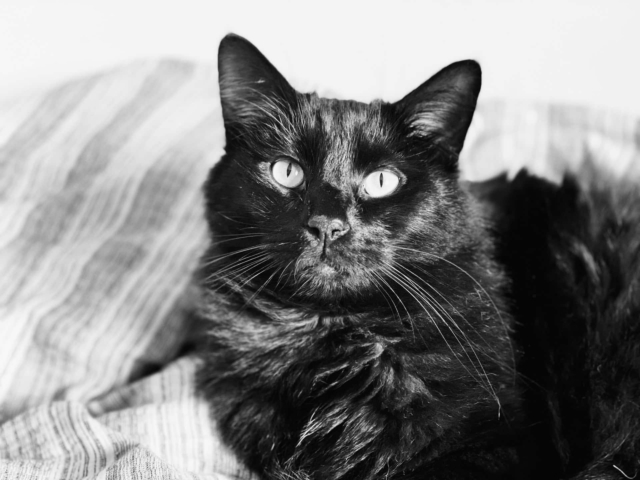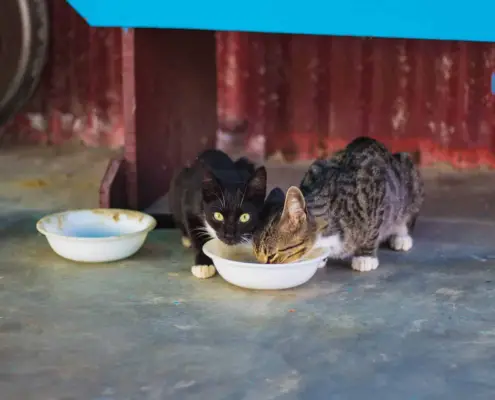
Cats have always been associated with elegance and grace, and one of the factors that contribute to their inherent beauty is their silky fur. The softness and smoothness of a cat’s coat can be mesmerizing, leaving us wondering what makes it so special. In this article, we will delve into the science behind feline elegance and uncover the secrets behind why cats are inherently silky.
The biology behind a cat’s silky fur
The silky nature of a cat’s fur can be attributed to its unique biological structure. Each strand of fur is composed of thousands of hair follicles, which produce the hair shafts. These hair shafts are made up of a protein called keratin, which gives the fur its strength and flexibility. The outer layer of the hair shaft, known as the cuticle, is composed of overlapping scales that lie flat, creating a smooth surface. This smooth surface is what gives the fur its silky texture.
Furthermore, cats have sebaceous glands located near the hair follicles that produce an oily substance called sebum. Sebum acts as a natural conditioner, keeping the fur moisturized and preventing it from becoming dry and brittle. The combination of the smooth cuticle and the presence of sebum gives cats their signature silky fur.
The role of grooming in maintaining a cat’s silky coat
Grooming plays a crucial role in maintaining a cat’s silky coat. Cats are notorious for their meticulous grooming habits, spending hours each day cleaning themselves. When cats groom, they use their tongue as a comb, which helps to distribute the natural oils produced by their sebaceous glands throughout their fur. This not only moisturizes the fur but also removes any dirt or debris that may have accumulated.
In addition to distributing oils, grooming also helps to align the hair shafts, giving the fur a sleek and shiny appearance. The barbs on a cat’s tongue work like a brush, smoothing out any tangles or knots in the fur. This constant grooming not only keeps the fur silky but also helps to regulate body temperature, as it stimulates the blood flow to the skin.
Factors that contribute to a cat’s silky fur
While the biology and grooming habits of cats play a significant role in their silky fur, there are other factors that can contribute to its texture. Diet, for instance, plays a crucial role in maintaining the health and appearance of a cat’s coat. A balanced diet that includes essential fatty acids, such as omega-3 and omega-6, can promote healthy fur growth and improve its texture.
Environment also plays a role in a cat’s fur quality. Cats that live in clean and stress-free environments are more likely to have healthier and silkier coats. Stress can lead to excessive grooming or shedding, which can affect the overall appearance of the fur. Regular visits to the veterinarian can help ensure that any underlying health issues that may affect the fur are identified and treated promptly.
Breeds known for their exceptionally silky coats
While all cats have inherently silky fur, there are certain breeds that are known for their exceptionally soft and lustrous coats. The Persian cat, for example, is famous for its long and luxurious fur. The Maine Coon is another breed with a silky coat that is both water-resistant and easy to maintain. The Siamese cat, known for its striking blue eyes, also boasts a short and silky coat.
Other breeds that are known for their silky fur include the Ragdoll, Birman, and Turkish Angora. These breeds have been selectively bred for their coat quality, resulting in fur that is not only silky but also hypoallergenic. If you are looking for a cat with a silky coat, these breeds may be worth considering.
Tips for keeping your cat’s fur silky and healthy
To maintain the natural silkiness of your cat’s fur, regular grooming is essential. Brushing your cat’s fur regularly not only helps to remove any loose hair or tangles but also stimulates the production of natural oils, keeping the fur moisturized. Use a brush or comb that is suitable for your cat’s fur length and texture to avoid causing any discomfort or damage to the coat.
In addition to grooming, a healthy diet is vital for maintaining the quality of your cat’s fur. Ensure that your cat’s diet is well-balanced and provides all the necessary nutrients, including essential fatty acids. If you have any concerns about your cat’s diet or fur quality, consult with your veterinarian, who can provide personalized advice and recommend suitable dietary supplements if needed.
Regular veterinary check-ups are also important to ensure that any underlying health issues that may affect the fur are addressed promptly. Your veterinarian can assess the condition of your cat’s coat and recommend appropriate treatments or medications if necessary.
Common misconceptions about cat fur and its silkiness
There are several misconceptions about cat fur and its silkiness that should be addressed. One common misconception is that the silkiness of a cat’s fur is solely determined by its breed. While certain breeds are known for their silky coats, all cats have inherently silky fur due to their biological structure.
Another misconception is that cats with longer fur are always silkier than cats with shorter fur. While longer fur may appear silkier due to its length, the texture and smoothness of a cat’s coat are not solely determined by its length. Factors such as grooming habits, diet, and overall health play a significant role in the silkiness of a cat’s fur.
The psychology behind the appeal of silky cats
The silky nature of a cat’s fur has a psychological appeal that goes beyond aesthetics. The softness and smoothness of a cat’s coat can evoke feelings of comfort and relaxation. It is no wonder that many people find themselves irresistibly drawn to petting a cat with silky fur.
Research has shown that interactions with animals, including petting and cuddling, can have a positive impact on mental health. The act of stroking a cat’s silky fur can release endorphins, which are hormones that promote feelings of pleasure and reduce stress and anxiety. The tactile experience of running your fingers through a cat’s silky fur can be incredibly soothing and therapeutic.
How to enhance the natural silkiness of your cat’s fur
While cats are inherently silky, there are ways to enhance the natural silkiness of their fur. Regular grooming, as mentioned earlier, is crucial for maintaining the quality of the fur. In addition to brushing, you can also use grooming products specifically designed to enhance the shine and smoothness of your cat’s coat. These products can help to moisturize the fur, reduce shedding, and improve overall coat health.
Another way to enhance the natural silkiness of your cat’s fur is through a healthy diet. As mentioned earlier, a balanced diet that includes essential fatty acids can promote healthy fur growth and improve its texture. Consult with your veterinarian to determine the best diet for your cat’s specific needs.
Celebrating the beauty and elegance of silky cats
In conclusion, the silky nature of a cat’s fur is a result of its unique biological structure, grooming habits, and other factors such as diet and environment. All cats are inherently silky, regardless of their breed or fur length. Regular grooming, a healthy diet, and regular veterinary check-ups are essential for maintaining the quality of a cat’s fur.
The appeal of silky cats goes beyond aesthetics, as the softness and smoothness of their fur can have a positive impact on our mental well-being. By understanding and appreciating the science behind feline elegance, we can better care for our furry companions and celebrate their beauty and elegance.
So, the next time you find yourself mesmerized by the silky fur of a cat, take a moment to appreciate the intricate biology and grooming habits that contribute to their inherent elegance.
If you enjoyed my article, I would appreciate you sharing it with your network.

Sima Ndlebe
Sima writes for CatBuzz. He is interested in Cats, Health and Fitness, and Entrepreneurship.
Published: 6 December 2023




